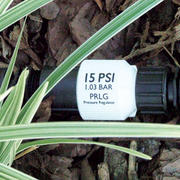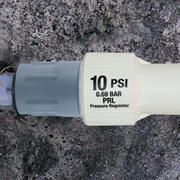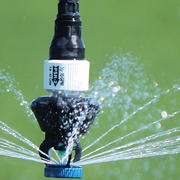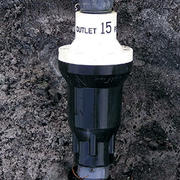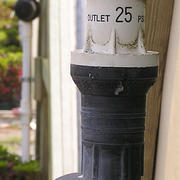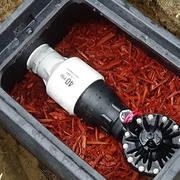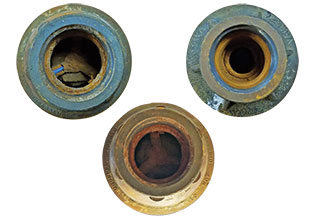
For years, growers have asked irrigation manufacturers, “How can I tell if my pressure regulator is bad?” And the industry has always responded, “Well, it’s not that easy.” But you can test pressure regulators using pressure gauges and even identify malfunctioning pressure regulators visually.
The most common signs of faulty pressure regulators include:
- Leakage between the device’s housings
- Misting or overwatering in some areas
- Increased water and energy consumption
- High-pitched squealing
Some malfunctioning pressure regulators emit water through the sides of the regulator when they fail structurally. Usually, this happens because the regulator was installed before a shut-off valve.
A malfunctioning regulator can result in a sprinkler pressure that will be too high. A sprinkler emitting a finer spray or exhibiting a faster rotation speed relative to adjacent sprinklers may indicate a regulator is operating above its nominal rating. If running below its nominal rating, sprinklers will produce larger droplets, slower rotation speed, and reduced wetted diameter.
These symptoms are spotted during a visual check of the system or noticed in unusual flow meter readings. Typical signs in the field are:
- Dry spots near the head
- Overwatering in a doughnut-shaped pattern
- Uneven crop growth
- Streaking in the area
The best time to visually inspect your system is early or late when the sun is low, as differences between sprinklers are easier to identify in this light.
How do you test pressure regulators?
All farmers should check their pressure regulators at least once every three years. You can test pressure regulators by installing a high-quality pressure gauge on each side of the regulator.
The gauge on the inlet side assures there is enough pressure for the regulator to operate. Remember that inlet pressure should be at least 0.34 bar (5 psi) above the pressure regulator rating for the regulator to function. The gauge on the outlet side (after the regulator) should match the preset pressure printed on the device, allowing for slight variation due to flow.
If your irrigation dealer has a regulating testing device, you can also check the readings on a new pressure regulator that matches the model you are testing.
Why do good regs go bad?
Though regulators can last for years, the degree of regulation will change over time as internal parts begin to wear. Anything with moving parts wears over time, and pressure regulators are not different.
The conditions under which pressure regulators operate influence their lifespan. Factors that contribute to wear include:
- Poor water quality
- Abrasive materials in the water
- Unflushed chemicals in the pipeline
- Long operating hours
Poor water quality
Water quality plays a significant role in the lifespan of pressure regulators. Surface water sources may contain grit and fibrous matter. Over time, suspended abrasive materials cause wear on the seat and the end of the throttling stem, which alters regulator performance.
Some surface water sources contain chemicals from runoff, including petroleum, which can cause damage to pressure regulator elements. Systems using well water with high iron content see rust buildup on and in the components.
These installations should employ filtration to help ensure the proper performance of the regulators and the sprinklers.
Unflushed chemicals in the pipeline
Irrigation systems are frequently used for chemical applications. Chemicals like nitrogen, fertilizers, and solutions used to combat insects and weeds can cause damage to internal regulator components.
It is best to flush the system after each chemical application to prevent residue from resting inside the regulator.
Long operating hours
Regulators installed on systems running for long hours throughout the season will wear faster than those running for fewer hours. The internal moving components operate differently as each begins to wear.
Some experts recommend replacing regulators when they reach 10,000 hours of operation.
An In-Depth Look at Troubleshooting
Check out the pressure regulator guide to learn more about the importance of maintaining correct system pressure to conserve water and energy, troubleshooting tips, and answers to FAQs.
Learn how to identify wear issues and what to do about them with Senninger's free on-demand Pressure Regulation course on Hunter University. You'll learn how to install pressure regulators in different irrigation systems, select a model, identify the causes of pressure fluctuations and more.

